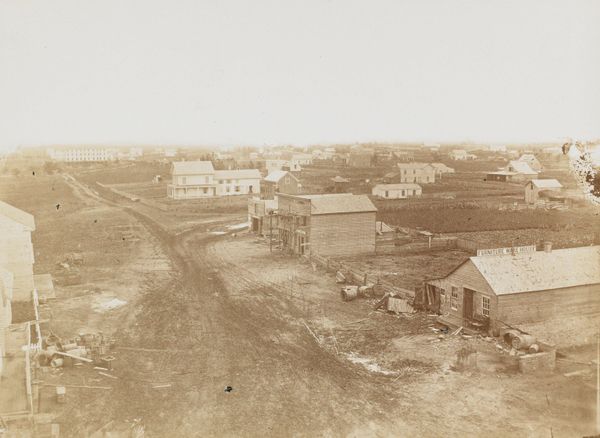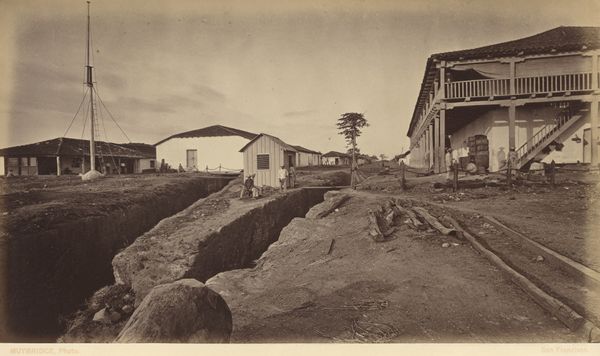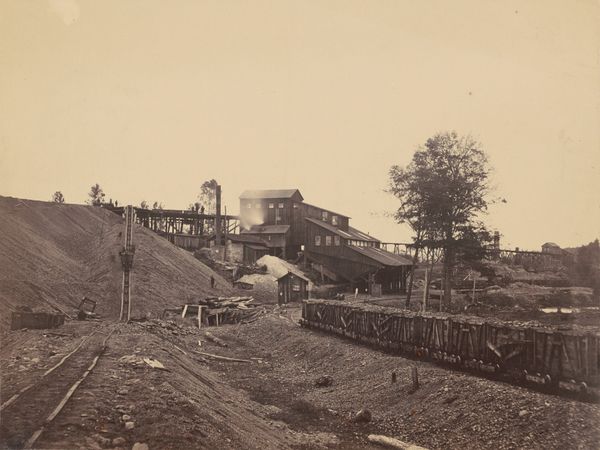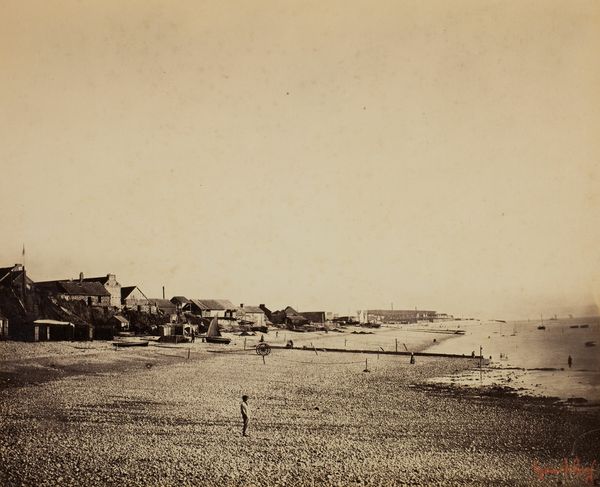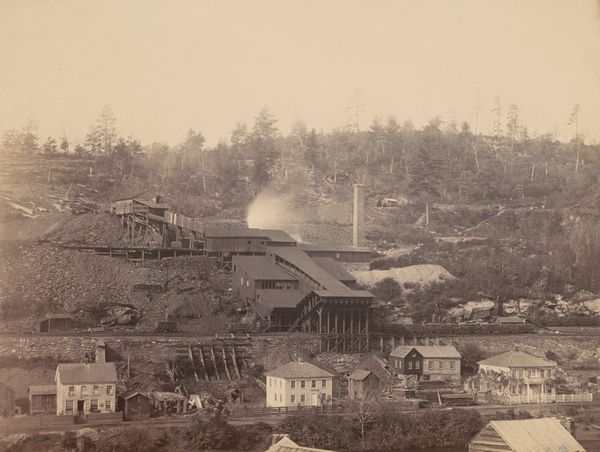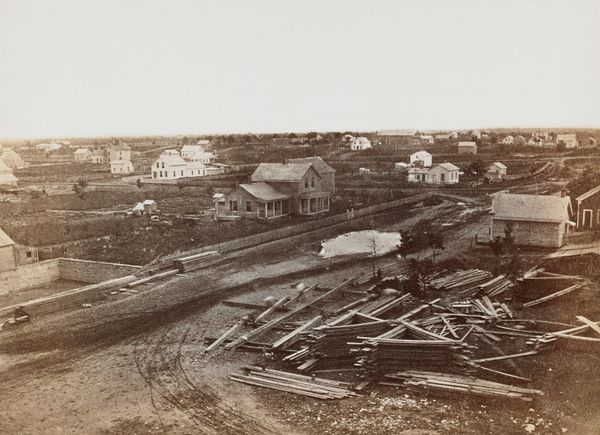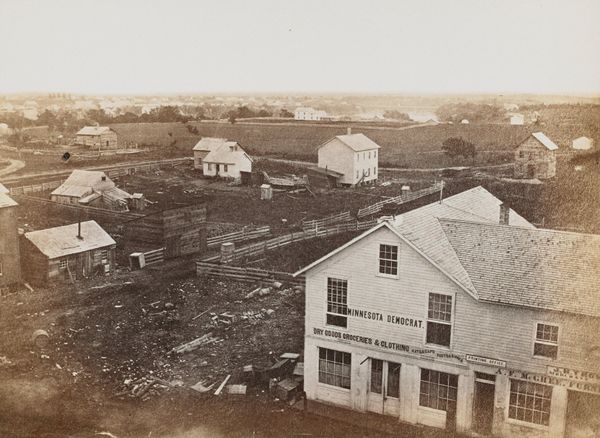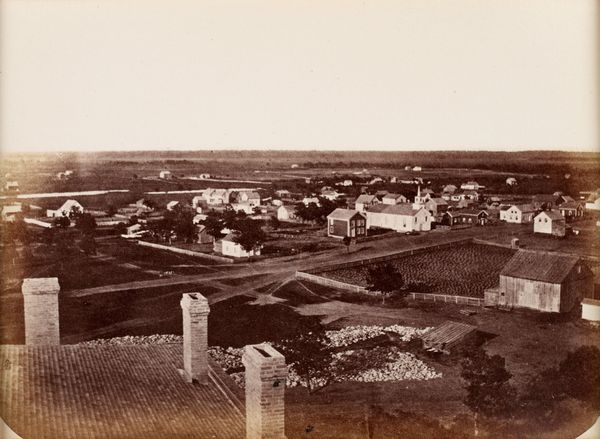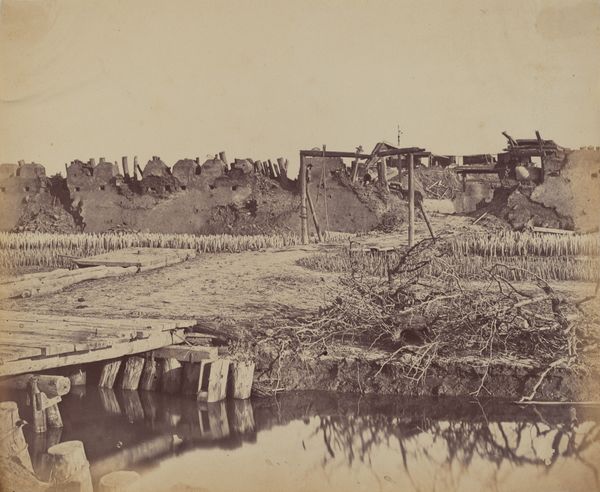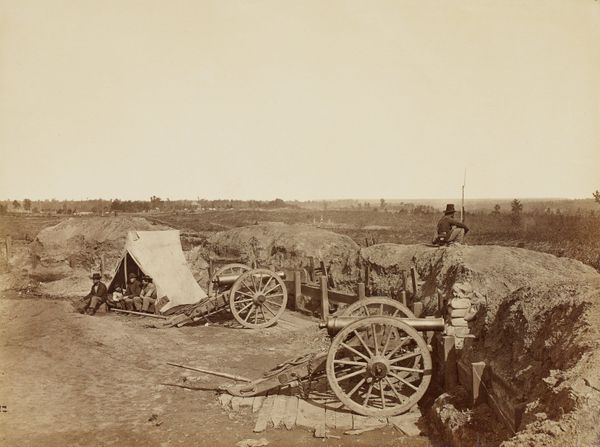
photography, albumen-print
#
landscape
#
photography
#
cityscape
#
albumen-print
#
realism
Dimensions: image/sheet: 30.6 × 41.1 cm (12 1/16 × 16 3/16 in.) mount: 45.6 × 55.8 cm (17 15/16 × 21 15/16 in.)
Copyright: National Gallery of Art: CC0 1.0
Curator: Standing before us is an albumen print from circa 1863 to 1865 by Thomas H. Johnson, titled "Scranton Terminus, Del. & Hudson Canal Co." What strikes you first about it? Editor: The sheer, overwhelming industrial landscape. It’s imposing, almost like a fortress of labor, a symbol of raw power and potential. Curator: Indeed. It offers a rather unsentimental view of progress, especially when contrasted with the picturesque landscapes favored at the time. Notice how Johnson captures the scene. There's an incredible visual density and a sense of immense scale. This wasn't just about recording the scene, but presenting an argument about its significance. Editor: That's interesting, given the industrial nature of the scene. Those repeating shapes of the buildings, chimneys, train cars – they have a hypnotic quality. It is a bit bleak, no figures command center stage or add any warmth, it's simply industry displayed. Curator: That resonates with broader shifts of the time. With urbanization accelerating and industry becoming increasingly important, places like this become key symbols. Scranton, as a terminus of the Delaware and Hudson Canal, was integral to anthracite coal transportation, a significant driver in industrializing America. Editor: Anthracite coal is visually symbolic as well, as black as night, seemingly rising out of the very landscape shown. Everything within this image services the extraction of coal. Coal became a double edged sword during this time, as it pushed advancement but at an often great cost. I'm certain many felt similarly while witnessing its reign during this period. Curator: Precisely, we have a potent convergence of imagery, hinting at rapid industrial change, with social and cultural shifts embedded in the depiction itself. We see this shift away from older, agrarian structures as the modern economy rose in its place. It makes the photograph far more complex and poignant than just a pretty picture. Editor: A sobering reminder that even in advancements there is an undercurrent that will need to eventually surface. Looking closer at all the minute shapes, one does get a better understanding about all those involved. Thank you. Curator: My pleasure. Reflecting on this piece reminds us how photographs, often viewed as objective, are really shaped by the moment they capture and how deeply those historical currents shape how they resonate across time.
Comments
No comments
Be the first to comment and join the conversation on the ultimate creative platform.
